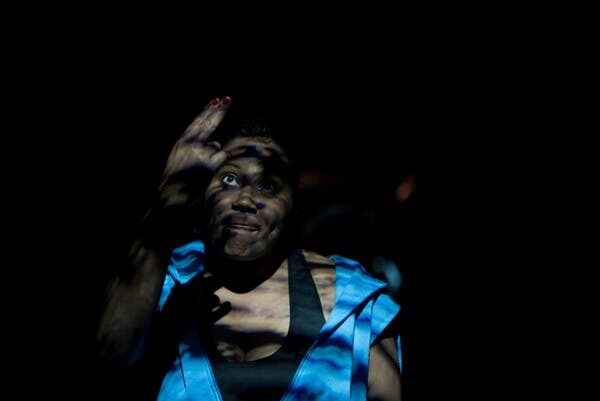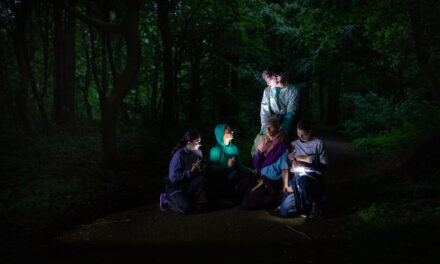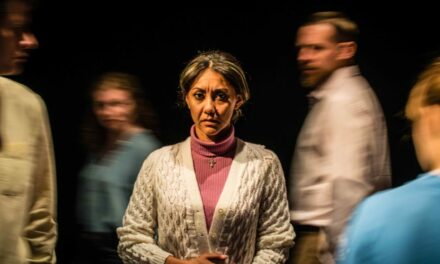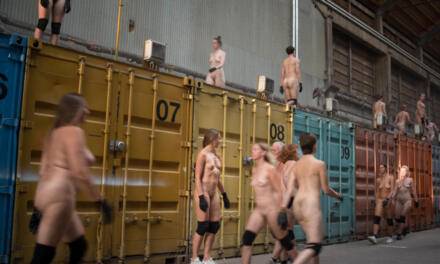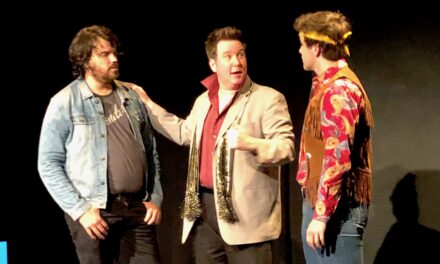If this year’s Sydney Festival is any indication, the monologue is back. So far, I have seen Adam Lazarus’s Daughter, Joel Bray’s Biladurang, Omar Musa’s Since Ali Died, Tara Beagan’s Deer Woman, and now Henrietta Baird’s The Weekend.
Not that the monologue every really went away. Indeed, it has a long history in both Western and non-Western performance genres. But critical opinion about solo performance has waxed and waned over the past fifty years.
On the one hand, supporters argue it’s been an important vehicle for artists who have historically been excluded from the theatre to tell their stories. On the other, critics worry the monologue might be part of the memoir boom and a “wider culture of self discussion and self-exposure“, symptomatic of a self-involved society. Yet these arguments fade into the background when you’re in the hands of a skilled storyteller like Henrietta Baird and a talented performer like Shakira Clanton.
The Weekend begins in relative silence. There is the sound of drumming, slow and steady like water dripping, and little else. The set is similarly stripped back, consisting of little more than a grey floor, two milk crates downstage, and a mirror with three panels upstage.
Clanton steps out from behind the mirror wearing purple tights and black singlet. Later she’ll don a blue sleeveless hoody. She dances: bending her knees, flicking her hands upwards, and sometimes straightening her limbs like a martial artist. Choreographed by Vicki Van Hout, with whom Baird has previously danced, this section also reminded me of Dalisa Pigram’s martial arts-inflected choreography in her solo show Gudirr Gudirr.
The protagonist, Lara, is a dancer from Sydney working in Cairns for a few weeks. That is, until she receives a phone call from her youngest son, Kyle, telling her that he and his brother Charlie are hungry because their dad hasn’t been over for more than two days and there’s no food in the house. Lara immediately gets on a plane. From the moment it lands, she’s on a mission to find her former partner Simon and “give him a growling”, as my mother might say.
In her pursuit across Redfern, Lara meets several women who have been similarly betrayed by him and his drug habits. She also finds they each have a habit of their own. Clanton plays all these women, as well as the two boys and an officious taxi call center operator, with great skill.
The first woman we meet is Ronnie, a woman in her mid-40s, who is “not Simon’s type”, Lara reassures herself. While at Ronnie’s place she also meets Courtney, a sweet fifteen-year-old who is addicted to heroin. Then Betty arrives, agitated and desperate for some meth.
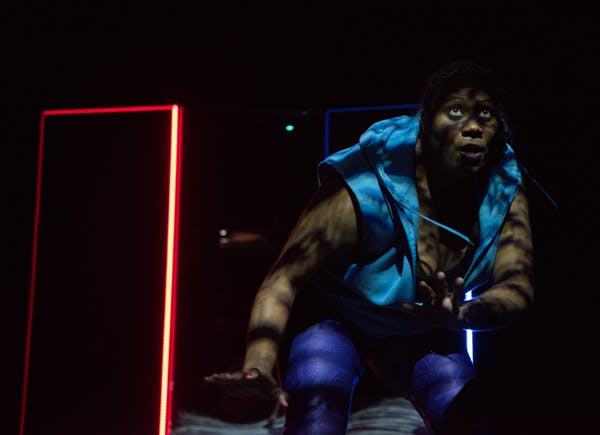
Shakira Clanton plays a dancer on a mission to find her former partner in The Weekend. Photo by Jamie James/courtesy of Moogahlin.
Lastly, we meet Ronnie’s sister, DD. Chaos and comedy ensue but the possibility of tragedy is ever-present: as soon as Lara agrees to carry Ronnie’s gym bag, spectators are audibly concerned. When she realized her boys have been by themselves for hours, we share her sweaty panic. Like Lara, we are constantly worried that something, somewhere is going to go horribly wrong.
Baird has a good ear for vernacular speech and her characters speak with both poetry and fury: telling jokes, swearing liberally, and coining phrases such as “She kicks them out before they even get a chance to pick up for themselves.”
She also has an eye for detail, especially fashion, as evidenced by Lara’s descriptions of what each character is wearing. Ronnie has “a big green jumper and track pants on with fluffy slippers. Like she’s still in the same clothes from the 80s”; Courtney is wearing “the shortest shorts. You know those sexy ones with the pockets that hang out the bottom”; and DD is “mutton dressed as lamb. Big hair and little sundress like she’s a teenager in the 90s!”
Most of all, Baird writes with compassion: every character is given a backstory that contextualizes their addiction and it’s clear that every one of them is simply doing their best.
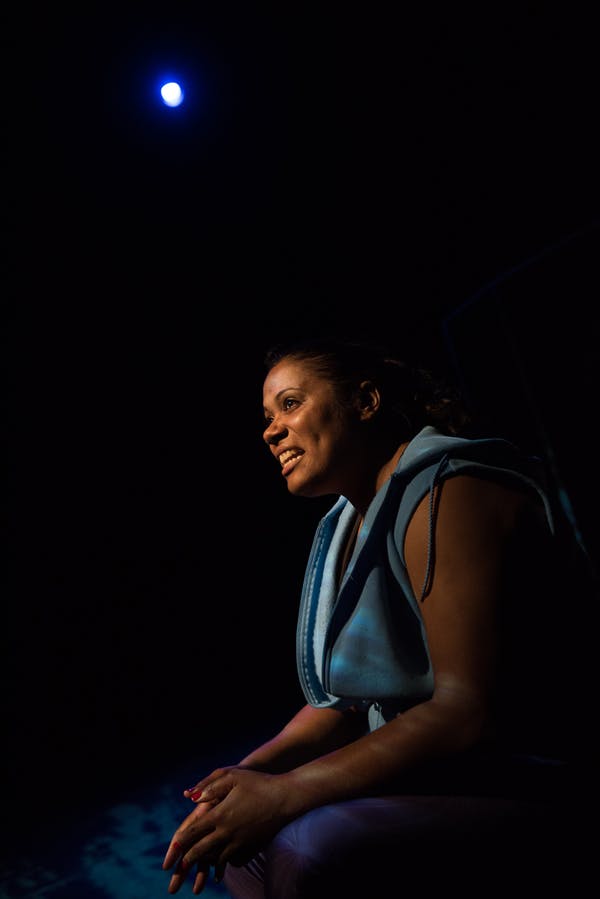
Baird’s characters speak with both poetry and fury. Photo by Jamies James/Courtesy of Moogahlin.
This combination of humor and compassion also structures Clanton’s playful but careful performance. Ronnie has a strong, stern voice but speaks of her children with a throaty grief; Betty’s voice is high and her physicality is agitated; Courtney speaks in a slow whisper and with a gentle smile; and DD snaps her fingers, playfully slaps her own arse and spins on her heels.
Like the rest of the production, the lighting design (Karen Norris) is understated. A string of lights frames each of the mirror’s sections, with different colors conjuring different locations. The lights are green when Lara is in the grimy lift, for instance, and later flash red and blue when the police are nearby. The concrete carpark is suggested through a grey and streaky light.
The sound design (Nick Wales and Rhyan Clapham) is similarly lowkey, with the drums continuing through the entire performance. When the music swells with danger, it is all the more effective. These directorial decisions by Liza-Mare Syron allow the script and performer to shine.
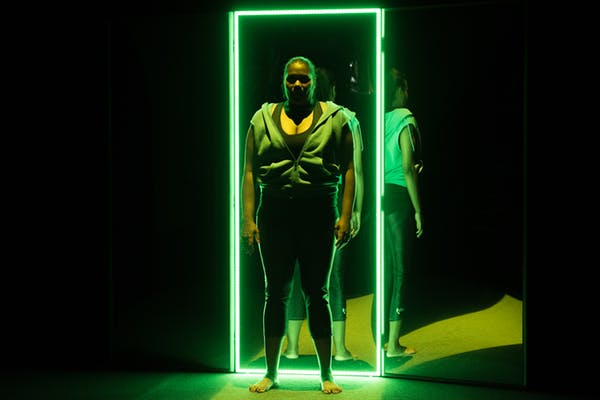
The lighting in The Weekend uses color to conjure different locations. Jamie James/Courtesy of Moogahlin.
Perhaps the monologue is back for political reasons, or perhaps it is simply a matter of economics, since solo shows are cheaper to produce when compared with other epic festival fare. Or perhaps it indicates that a new generation of writers is emerging: artists often start with semi-autobiographical material before moving onto bigger, more complex pieces. Leah Purcell, for instance, started with Box the Pony in 1997; 20 years later she is about to film her award-winning adaptation of the Drover’s Wife. For this reason, I can’t wait to see what Baird does next.
The Weekend was staged as a work-in-progress in 2017 at the biennial Yellamundie National First Peoples Playwrighting Festival, where it was one of the hits of that year, as recorded in Maryrose Casey’s review. Later this week, the 2019 iteration will get underway. If you want a glimpse of what you might be seeing at the Sydney Festival in 20121- and of the future of Australian theatre more generally- I suggest you along to listen.
This article was originally posted at theconversation.com on January 22nd, 2019, and has been reposted with permission. To read the original article, click here.
This post was written by the author in their personal capacity.The opinions expressed in this article are the author’s own and do not reflect the view of The Theatre Times, their staff or collaborators.
This post was written by Caroline Wake.
The views expressed here belong to the author and do not necessarily reflect our views and opinions.

